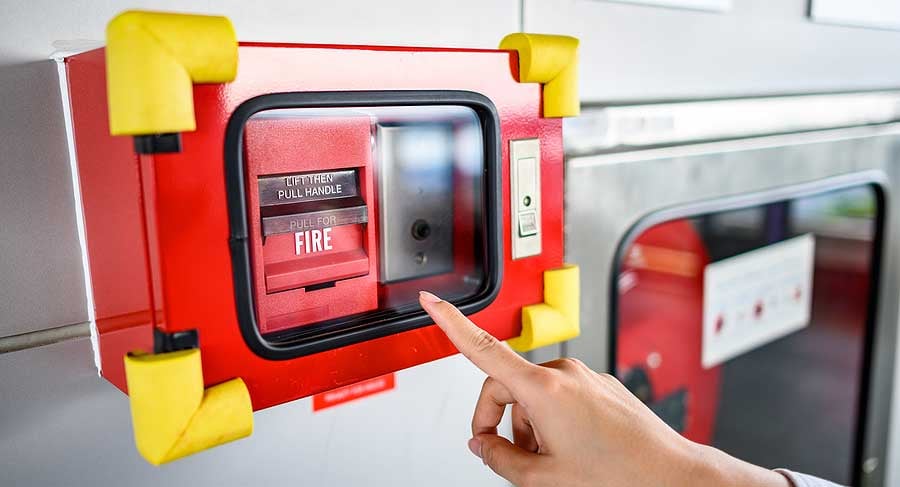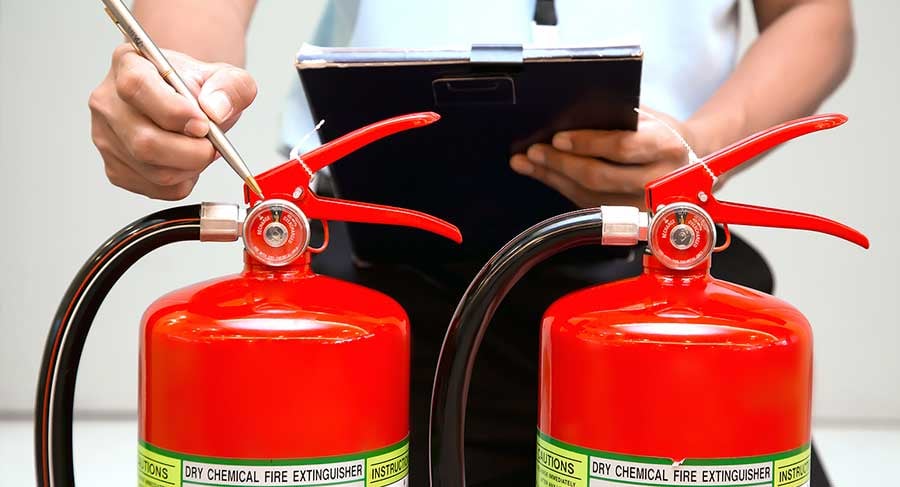How to run great fire evacuation procedures for workers and visitors

Under the Health and Safety at Work, etc Act 1974 (HSWA), a business or school owes a duty of care to all their visitors. This will include making sure visitor safety is part of your emergency evacuation plans. An important part of emergency planning is putting your plans to the test with effective fire drills. In addition to conducting drills, it is also the employer’s responsibility to conduct a fire safety assessment of the premises, to inform staff about potential dangers and risks in the workplace, train staff and implement fire safety measures. This can be done in our Visitor Management software.
What are the UK Fire Regulations?
The responsibility for fire safety and prevention at a place of work belongs to the employer, the landlord, the owner, an occupier or if you are in control of the premises (e.g. you are the building manager or the risk assessor). Under this legal definition you are a “responsible person” and can be held accountable for any workplace incidents that happen due to fire safety risks that have not been adequately managed.
The main legislation covering workplace fire safety is The Regulatory Reform (Fire Safety) Order 2005. The key duties under these regulations include:
- Ensuring regular fire risk assessments are carried out
- Communicating any identified risks to the people on the premises
- Implementing hazard control measure to minimise the risks
- Installing, inspecting and regularly maintaining all fire safety equipment
- Creating an emergency response plan
- Organising adequate fire safety training & evacuation drills
Don't forget Visitors in your Emergency Plans
In addition to evacuating employees in an emergency, you are responsible for evacuating visitors and accounting for them once they’ve reached their muster point. Accurate headcounts will help to ensure that all building occupants are evacuated safely. A good visitor booking in process will not only provide an up-to-date visitor register, it can also communicate important information on fire safety and planned drills.
How often do you need to perform a drill?
Fire drills are an opportunity to practice evacuation procedures to make sure all staff are familiar with the process, escape routes and exit points so that everyone is prepared for a real life emergency situation with minimum panic.
Under UK law you should carry out at least one fire drill per year and record the results. You must keep the results as part of your fire safety and evacuation plan. The International Fire Code suggests an interval of approx three months. However, this will depend on specific workplace risk factors – sites with flammable materials or have a high staff turnover will benefit from more frequent fire drills.
Should you pre-warn staff about an upcoming drill?
While the element of surprise might stress test your evacuation procedure, it may cause unnecessary panic. It’s recommended that you let you employees and any visitors know there is a drill coming up, and ensure that they understand their responsibilities in following procedure correctly and safely. Staff and visitors should be made aware which exit routes to use, where the assembly point is, who is responsible to carry out sweeps and roll call.

Preparing for a fire drill
There are a few key actions for successfully carrying out a fire drill; these include:
- Fire wardens – ensure that you have an appropriate number of fire wardens and that they have been properly trained.
- Decide if you have a specific objective to monitor – maybe part of your escape plan or improving exit times.
- Updated registers – it is vitally important to keep an up-to-date register for the building as this way you will know who is in the building at any given time.
- De-activate any alarm systems which automatically alerts the fire service. Remember to re-activate once the drill has finished.
- It’s good practice to notify people in nearby buildings of the planned drill date and time.
- Make plans for the assistance of any staff with limited mobility or other issues.
During the fire drill
-
The fire marshal or appointed person sounds the alarm
-
A mechanism is set in place to record the duration of the evacuation
-
Consider changing some variables such as blocking a fire door to force people to think about alternative exit points
-
Observers should be placed at points around the building in areas such as stairwells to look for good and bad practices
-
During the alarm any fire wardens and other appointed persons (First Aid, Sweepers) should assume the role for which they have been trained
-
All people leave via the nearest designated fire exit
-
Fire Wardens with responsibility for particular areas to ensure their area is clear
-
All personnel to assemble at the Fire Assembly Point
-
Fire Marshal performs roll call to ensure everyone is accounted for
-
Notification is given to return to the building when the Fire Marshal is satisfied that all objectives of the drill have been met.
After the drill
Recording the speed of the evacuation is just one metric, you should also note staff behaviour, difficulties with any escape route or any individuals requiring extra assistance. The fire marshal should record the following information in the Fire Log Book:
-
Date and time of the evacuation
-
The call point tested to start the siren
-
How long did the evacuation take?
-
Were there any unexpected delays/hazards?
-
Did the alarm sound in all locations?
-
Did all automatic doors release or shutters operate as designed?
-
Did all individual Personal Emergency Evacuation Plans work as planned?
With this information you can review the performance and assess the outcomes highlighting any areas which need to be addressed and updated for next time. 
About Lisa Robinson
Lisa - word smith to the gods.
